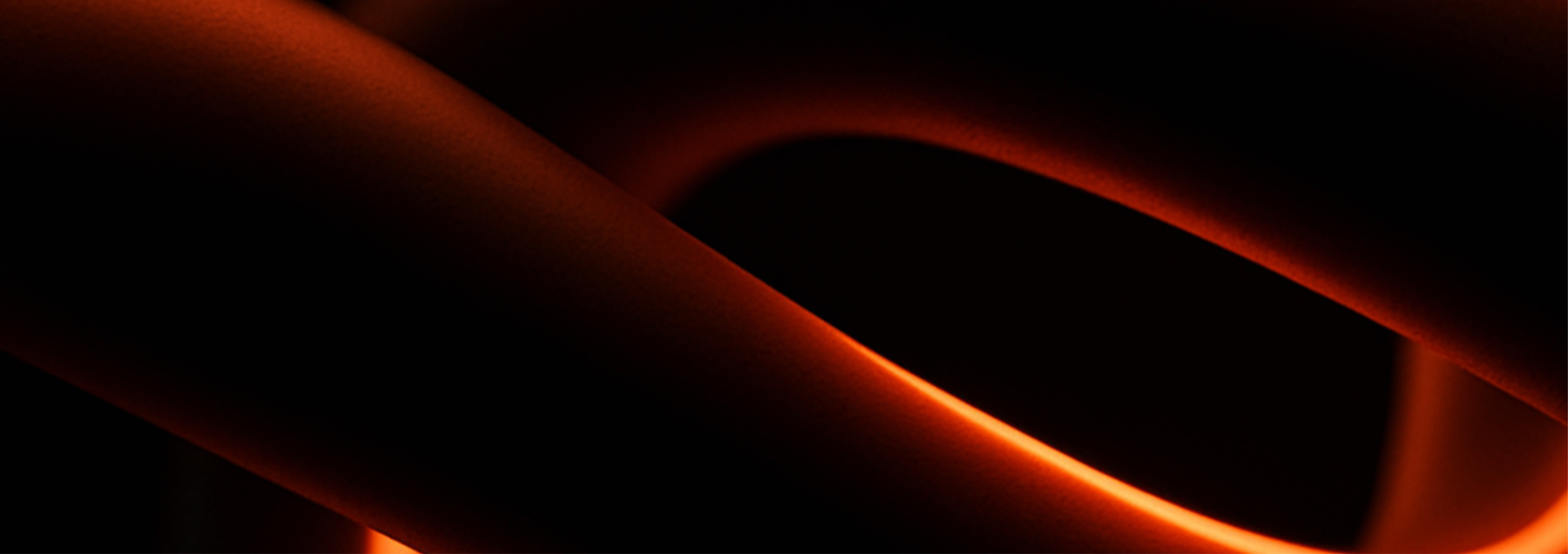Synthetic and recombinant peptides are chemically sophisticated molecules. Their backbones contain amide bonds vulnerable to enzymatic cleavage, while side-chains provide chemically active sites: sulfur atoms (Cys, Met) that oxidise in the presence of trace peroxide or metal ions (Mulinacci), and indole rings (Trp) that photo-oxidise under ordinary laboratory light (Steinhart; Savige & Fontana; Koivumäki et al.). Because these reactive centres are distributed along a flexible chain, small environmental shifts—temperature, pH, oxygen, or agitation—can trigger multiple degradation pathways at once (Korang-Yeboah et al.). In practical terms, a single mishandled thaw can cut purity by several percent, shift receptor potency by a log unit, or introduce immunogenic aggregates (Mulinacci).
For researchers who receive peptides as finished materials—whether for in-vitro assays, animal studies, or formulation work—controlling these variables is essential for data reproducibility and accurate dose selection. The procedures described here translate industrial stability principles into routine laboratory practice, outlining how to store lyophilised vials, select reconstitution buffers, minimise freeze–thaw cycles, and recognise early degradation with straightforward checks. Adhering to these measures will help maintain peptide integrity from the first thaw to the final administration.
Main Degradation Pathways
Proteolytic cleavage
Trace amounts of serine or metalloproteases—carried over from serum, cell lysate, or inadequately cleaned glassware—can cut the peptide backbone. Early signs include new, lower-molecular-weight peaks on an HPLC trace and a measurable drop in bioactivity or in-vivo half-life.
Oxidation of Met, Trp, and Cys
Dissolved oxygen, peroxides in aged surfactants, or copper and iron ions leached from metal needles convert methionine to sulfoxide (+16 Da) or sulfone (+32 Da) and modify tryptophan indoles. Oxidised samples may develop a yellow tint and show mass-spectrometric shifts of +16 Da increments (Mulinacci et al.; Saletti et al.; Wagner & Fraser).
Deamidation and iso-aspartate formation
At pH values above 7 and temperatures at or above room temperature, asparagine slowly hydrolyses to aspartate while aspartate can rearrange to iso-Asp. The +1 Da mass change often appears as peak splitting or broadening in reversed-phase HPLC and causes gradual potency drift during storage (Dykstra et al.; De Boni et al.).
Aggregation or surface adsorption
Freeze–thaw cycles, vigorous agitation, or prolonged contact with hydrophobic plastics encourage self-association or sticking to vessel walls. Laboratory symptoms include visible haze, increased turbidity at 350 nm, rising particle counts, and unexpectedly low recovery of functional material (Mulinacci et al.).
Long-Term Storage Recommendations
Lyophilised (dry) peptides
- Temperature: Store at −20 °C for most peptides; move to −80 °C only for methionine-rich (> 4 %) or tryptophan-rich (> 2 %) sequences, where oxidation risk outweighs freeze-crack risk (Chandrasekhar & Topp; Salisbury et al.).
- Humidity < 2 %: Keep vials in a foil pouch with fresh silica gel; replace sachets as soon as the indicator dots turn pink or green (Blynskaia et al.).
- Purge oxygen: A brief nitrogen or argon puff before capping cuts head-space O₂ below 2 %, slowing oxidation two- to three-fold (Audhya & Goldstein).
- Aliquot for single use: Divide the bulk powder or solution into portions sized for one experimental session so that each vial is thawed only once, eliminating freeze–thaw cycles (Chandrasekhar & Topp).
- Shipping hint: For dry ice transport, add an extra zip bag inside the foam box; sublimating CO₂ creates moisture that can seep through a faulty cap (Abels et al.).
Reading the Peptide Label
The brief information printed on a peptide vial packs crucial details, investing a moment to interpret it can eliminate the bulk of preparation errors.
- Salt form (TFA, acetate, or “salt-free”).
TFA salt means the peptide was purified in trifluoroacetic acid; the first solution you make will be slightly acidic. Dissolve in water, then adjust pH upward if your assay needs neutrality. Acetate or salt-free powders start closer to neutral pH, so you can go straight into your working buffer (Tan et al.).
- Net weight and stated purity.
If the label reads “0.50 mg, 95 %,” the usable peptide mass is 0.50 mg × 0.95 = 0.475 mg. Convert that figure to micromoles with the molecular weight printed on the data sheet; accurate molar dosing depends on this correction.
- Sequence modifiers.
Notes such as “C-terminal amide,” “lipidated C18,” or “FITC-labelled” signal changes in solubility and stability. Lipid tails or bulky fluorophores often need 10–20 % acetonitrile (or a touch of DMSO) to dissolve cleanly; methionine sulfoxide (Met(O)) indicates the peptide is already partially oxidised and should be handled under low-oxygen conditions (Zhang & Bulaj; Myšková et al.).
- Storage recommendation.
Phrases like “store ≤ –20 °C, desiccated” reflect the supplier’s stability data. Keep unopened vials at or below the stated temperature, return any opened vial to that range promptly, and mark the label with the date first opened—purity can drift even in a frost-free freezer once moisture is present (Miller & De la Fourniere).
A brief label check—salt form, corrected mass, special modifications, and storage note—eliminates the most common handling mistakes and sets up the peptide for a stable lifespan on your bench.
Choosing an Appropriate Vessel
Tube Material:
- For short-term use (hours to a day), clean borosilicate glass vials are low-risk and chemically inert.
- For overnight or multi-day storage, low-protein-bind polypropylene tubes reduce surface adsorption, especially for hydrophobic or basic peptides (Goebel-Stengel et al.).
Tube volume: Use a container that leaves minimal head-space once the solution is made. Less air means lower oxygen exposure and slower oxidation (Kofanova et al.).
Light sensitivity: If the sequence contains multiple Trp residues or an added fluorophore, pick amber tubes or wrap clear tubes in aluminium foil, even routine lab lighting can initiate photo-oxidation over several hours (Ryu et al.).
Avoid metal contact for acidic solutions: Drawing low-pH peptide stocks through stainless-steel needles can leach Cu²⁺ and Fe²⁺ ions, catalysing oxidation. Plastic or PEEK syringes eliminate this risk (Goebel-Stengel et al.).
Watch silicone oil: Standard disposable syringes use silicone lubricant that can shed droplets; these droplets scatter light and inflate particle counts. If particulate limits matter (e.g., for in-vivo dosing), switch to low-silicone syringes or pre-flush with buffer to remove excess oil (Kim et al.).
Label clearly: Every aliquot should carry four data points: peptide name, concentration, buffer/pH, and date prepared. Clear labels prevent mix-ups and help trace any potency drift back to a specific storage interval.
Choosing the right container, and documenting what is in it, takes seconds and protects the integrity of every downstream assay or dose.
Re-constituting peptides
A peptide that looks perfectly homogeneous as a dry powder can behave very differently once water is added. Two variables largely dictate its solubility profile: net charge at the working pH and overall hydrophobicity. Identifying these traits first prevents the trial-and-error dissolutions that waste material and introduce stress (Narita et al.).
Typical solvent choices
- Basic peptides (rich in Lys/Arg). Water containing 0.05–0.1 % acetic acid (or TFA) protonates the basic side-chains and keeps the chain in solution.
- Acidic peptides (rich in Asp/Glu). A light bicarbonate buffer around pH 8 neutralises excess acid groups without adding high salt.
- Hydrophobic peptides. Start with 10–20 % acetonitrile or a small volume of DMSO, then dilute step-wise into the assay buffer; this breaks hydrophobic self-association (Liang et al.).
Reconstitution in practice
- Add just enough of the chosen solvent to wet the powder.
- Warm briefly to 30–37 °C and swirl, avoid vigorous vortexing that traps air bubbles.
- Once fully dissolved, adjust to the required concentration with buffer.
- Clarify by a short spin or 0.22 µm filtration; discard if cloudiness persists.
Record the final pH, concentration, and date on every vial; these simple notes prevent silent shifts that can later confound dosing or assay readouts (Deni et al.).
Common Pitfalls
Repeated freeze–thaw cycles:
Each thaw introduces moisture and mechanical stress, nudging the peptide toward aggregation or oxidation (Kent et al.). Prepare single-use aliquots upfront so a vial is thawed only once.
Long-term storage at high pH:
Keeping a peptide above pH 8 speeds up deamidation and iso-Asp formation (Alam et al.; Nguyen et al.). Store stocks between pH 5 and 7, adjusting to higher pH only just before the assay if your protocol requires it.
Metal contact with acidic solutions:
Drawing low-pH peptide into a stainless-steel needle can leach trace copper or iron, which then catalyse oxidation (Cleland et al.). Switch to plastic or PEEK syringes; if metal contact is unavoidable, include a tiny amount of EDTA (≈0.01 %) to bind the metals.
Vigorous mixing and frothing:
Hard vortexing traps air bubbles that seed aggregation. Instead, warm the solution gently to 30–37 °C and swirl or invert until the powder dissolves (Cleland et al.).
Silicone oil from syringes:
Standard syringes are lubricated with silicone, and droplets can shed into peptide solutions—showing up later as particle counts or lost material at the interface. Use low-silicone or pre-flushed syringes for critical in-vivo doses (Cleland et al.).
Summary
Maintaining peptide stability relies on a small set of rigorously applied practices. Accurate interpretation of the vial label—salt form, purity, recommended storage conditions—provides the initial parameters for correct buffer selection and dosage calculations. Long-term integrity is best preserved by storing lyophilised aliquots at –20 °C under dry, inert atmosphere and limiting each aliquot to a single thaw. During reconstitution, solvent choice should reflect the peptide’s net charge and hydrophobic profile; gentle warming and low-shear mixing minimise aggregation.
Container material also influences stability: low-binding polypropylene or amber borosilicate glass reduces surface adsorption, and non-metallic transfer devices prevent trace-metal catalysed oxidation. Routine bench-top precautions—storage on ice, protection from ambient light, and brief visual or pH inspections—allow early detection of degradation. Implementing these measures supports consistent potency, reliable experimental outcomes, and efficient use of peptide material throughout the course of research and pre-clinical work.


